This post describes how to plan your visit to witness the Changing of the Guard at the Tomb of the Unknown in Arlington National Cemetery.
We include tips on where to get the best view as well as a full description of the ceremony.
- Where does it take place?
- When does it take place?
- Viewing the Ceremony
- A Brief History
- The Ceremony Explained
- Full Guide to the Cemetery
Where does the Changing of the Guard Take Place?
The Changing of the Guard takes place in the middle of Arlington Cemetery at the top of one of two hills.
It occurs between the Tomb of the Unknown Soldier and the Memorial Amphitheater.
You can also view our Google map with directions.
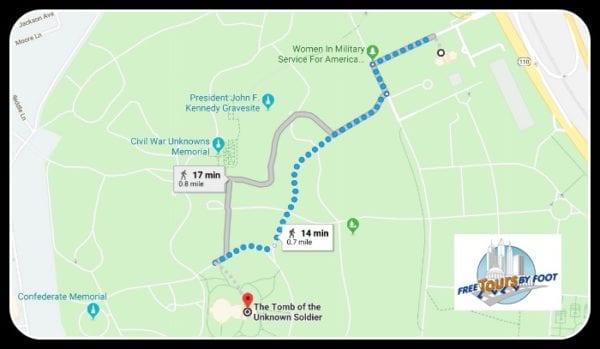
If you are walking from the welcome center, it is approximately 15-20 minutes up moderately steep hills to reach the Tomb.
When does the Changing of the Guard Take Place?
The changing of the guard happens every hour on the hour when the cemetery is open to the public from October 01 through March 31.
From April 1 through September 30, it also occurs every half hour when the cemetery is open to the public.
On some occasions (particularly in the Spring months), there are also wreath-laying ceremonies by school groups.
These happen usually a few minutes after the changing.
If you notice that people aren't leaving after the changing, stick around for a few minutes to watch this ceremony.
Let Us Take You Here
Our name your own price, guided Arlington Cemetery Walking Tour runs most days of the week in the high season and includes the Changing of the Guard.
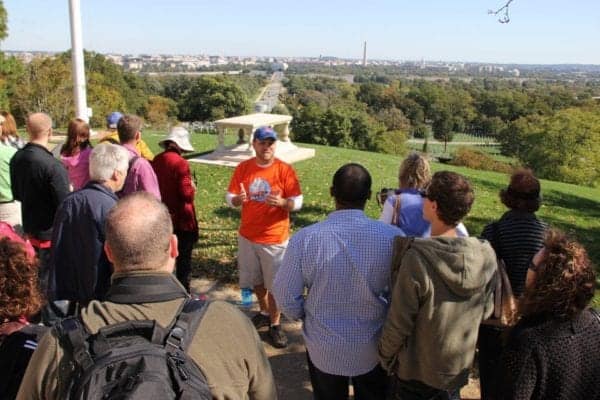
Likewise, our GPS-led audio tour of the cemetery also stops here. Our tours make 20+ additional stops in the cemetery.
Here is a free sample.
Alternatively, you might consider riding the trolleys through the cemetery, which stop at the tomb.
Trolley Ticket Prices:
- $18 for Adults
- $10 for Children
Where to Stand to Watch the Changing of the Guard?
If you want an up close-up view of the inspection of the new sentinel, then be sure to choose the front right side of the grandstand (when looking at the Tomb), as close to the rail as possible.
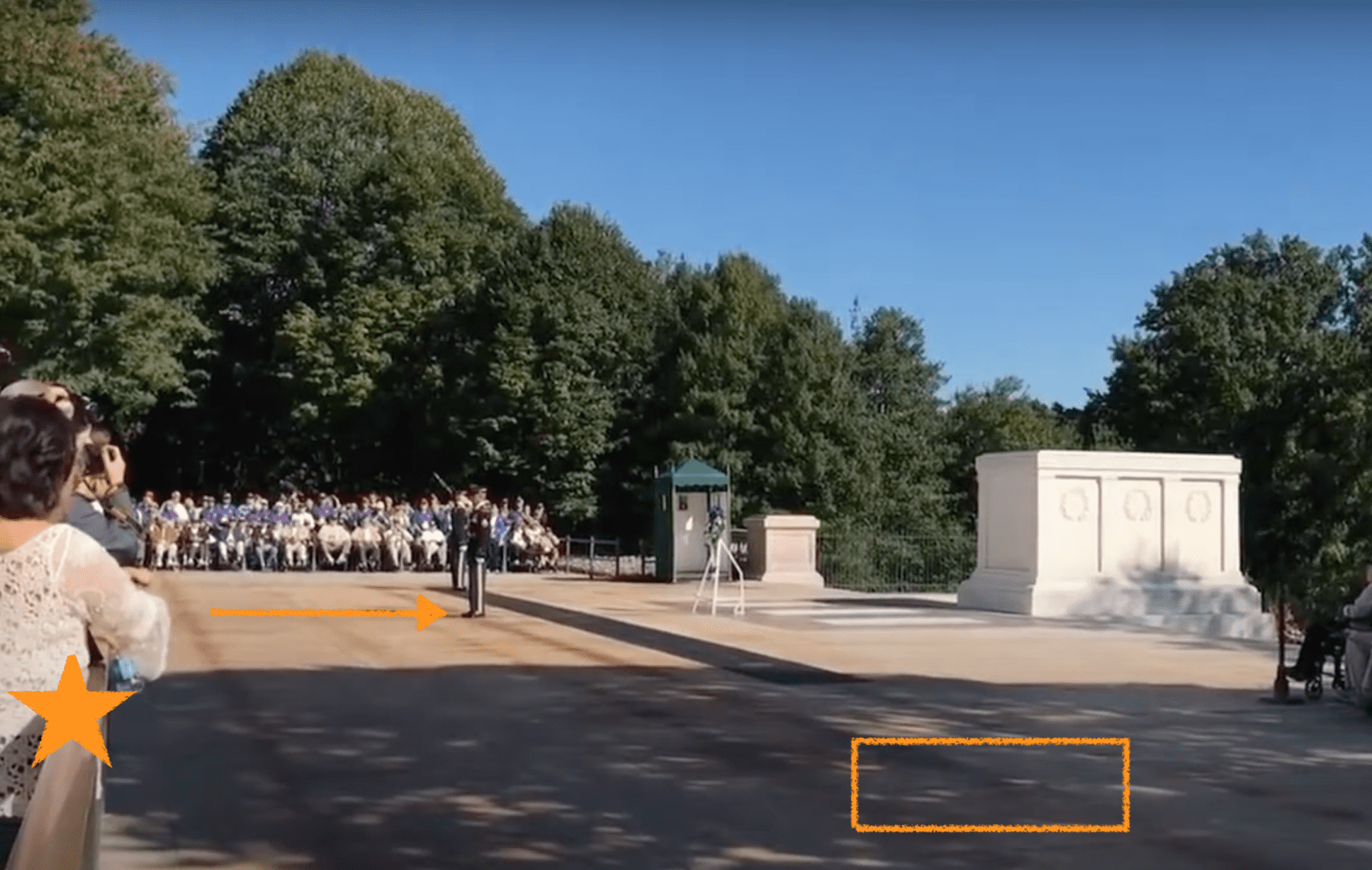
We recommend that spectators stand to the right of the Tomb for the best views.
The orange star in the image above shows the best viewing points on the lower deck.
If you'll be watching from the upper deck of the grandstand make sure you're on this side of the tomb.
The orange box where the inspection of the relief sentinel by the commanding officer takes place.
The orange arrow points to where the actual Changing of the Guard takes place.
The dark stripes worn into the plaza in the image are where they walk during the ceremony and you can see the mat on which the Tomb Guard walks while guarding.
What is the Origins of the Changing of the Guard?
When the Tomb of the Unknown Soldier for World War 1 was erected, access to the Tomb was considered achievable only with great difficulty to the average visitor to the cemetery, and the Army felt the stationing of a sentry was not necessary.
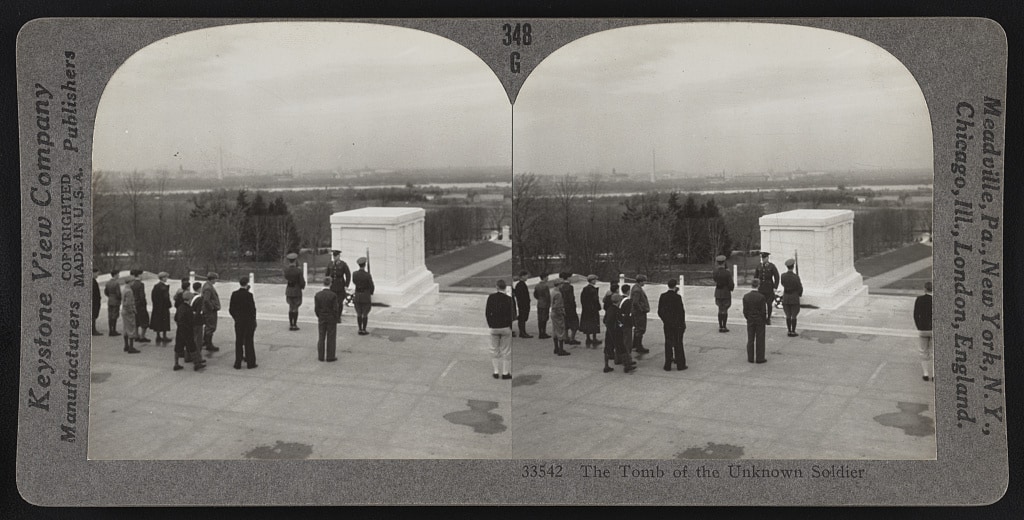
However, according to Robert M. Poole, author of "On Hallowed Ground: The Story of Arlington National Cemetery", by 1923, a lack of decorum at the Tomb was being reported to the Army.
Some of the undignified activities included picnickers enjoying the views of Washington, and professional photographers taking photos of tourists in front of the Tomb.
Other complaints included cigars being stubbed out on the marble plaza and men approaching the Tomb with hats on.
Following a story reported in the Washington Post, the Army hired a private guard at the end of 1923.
In 1926, after complaints from veterans visiting the Tomb, a military guard was posted.
By 1937, the military sentries would stand guard 24 hours a day.
As with many armed forces, tradition is important for the United States Army and sentries posted at the Tomb are ceremoniously relieved.
Today, the Tomb of the Unknown Soldier is guarded by members of the Army's Third Regiment, also known as the Old Guard.
The remains of unknown soldiers from World War I, World War II, and the Korean War are interred here. There is also a remembrance plaque for the Vietnam War, though there are no longer any unidentified remains.
The Tomb sarcophagus is decorated with three wreaths on each side panel. On the front, there are three figures to represent Peace, Victory and Valor. The side that faces the viewing platform features the inscription: “Here rests in honored glory an American soldier known but to God.”
Description of the Ceremony
If you arrive before the Changing starts, you will see a lone sentinel, sharply dressed in formal Army attire, and most importantly, no rank.
Since we do not know who the Unknowns are, we do not, therefore, know their ranks, and it would be inappropriate for the Unknowns to be guarded by someone who outranks them.
You may see the sentinel wearing a Tomb Guard Identification Badge and any medals earned, however.
At some point, the sentinel will be standing at the end of a long black mat, facing east (in the direction of the Tomb).
After 21 seconds, the guard will make a 90-degree turn, click his heels, and then adjust his m-14 rifle to his outside shoulder, in between himself and the crowd, always guarding the Tomb.
After another 21 seconds, the Sentinel will take 21 steps across the mat, past the Tomb.
Once they reach the other end, they will click his heels, make a sharp 90-degree right turn to the east (again, in the direction of the Tomb).
He will click his heels, and then wait another 21 seconds before repeating the process, only this time in the other direction, walking with the same cadence.
The number 21 is significant, as it's in honor of the 21-gun salute, the highest salute accepted in the U.S. military.
It is reserved for the President of the United States and foreign heads of state, but also for the Unknowns.
(Visit the U.S. Navy's website for the origins of the 21 gun salute).
A relief commander will come out, seemingly from nowhere, and will approach and salute the Tomb.
They will turn to the crowd and ask you to rise and remain silent during the ceremony, all the while, the posted sentinel will continue with his routine.
As the Relief Commander is speaking, the relief sentinel will appear.
The commander will walk over to the relief sentinel (this is why we suggest positioning yourself on the right side of the grandstand).
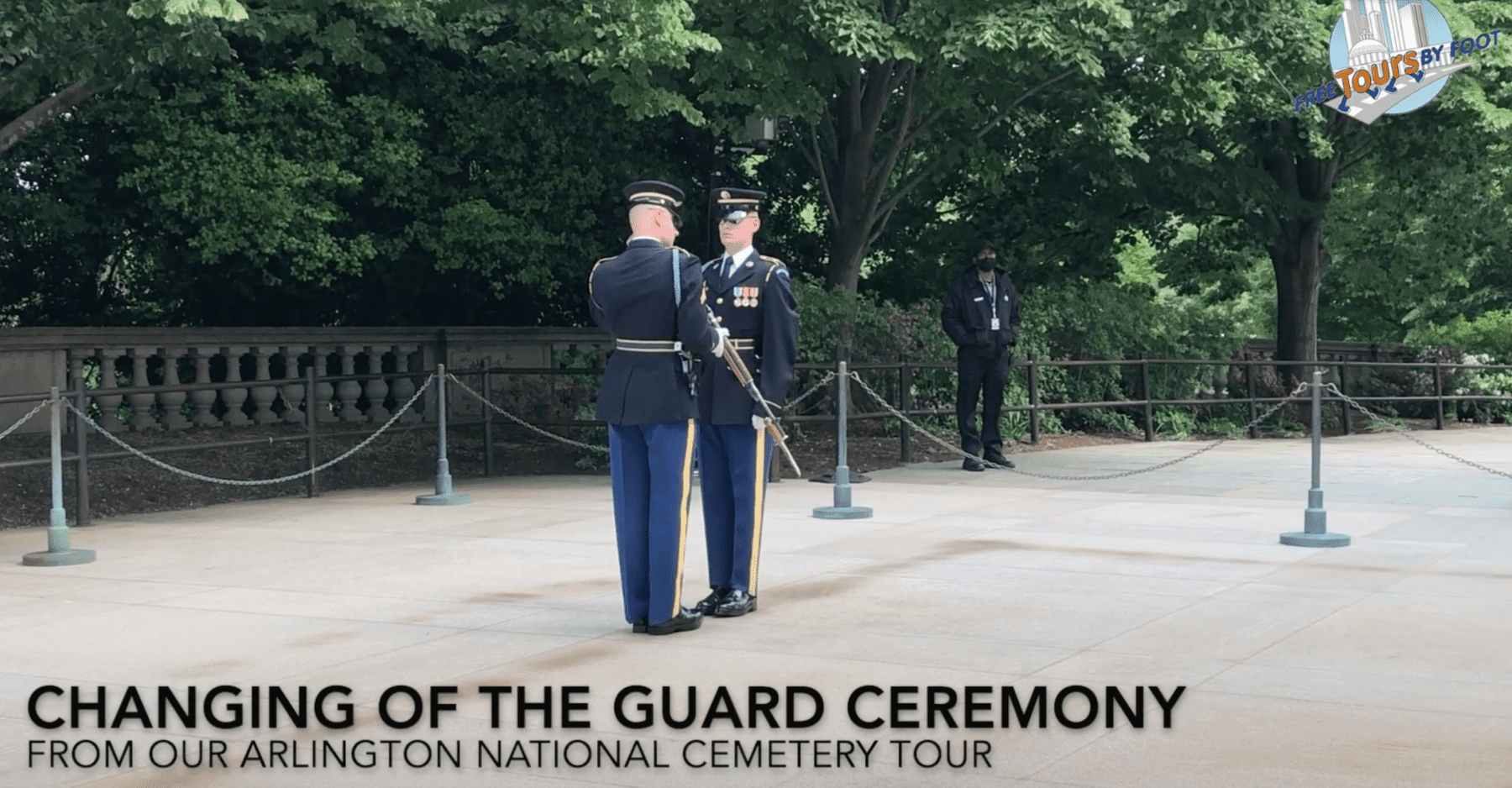
The commander will conduct a full inspection of the new sentinel and a white-glove inspection of the weapon.
This is a real inspection and the relief sentinel can be sent away, leaving the current sentinel in place till the next scheduled Changing of the Guard.
If approved, both the relief commander and relief sentinel will walk to the middle to meet with the posted sentinel, all the while keeping in step with each other.
At this point, the relief commander will complete the ceremony by having the posted sentinel step off of the mat and face the relief sentinel.
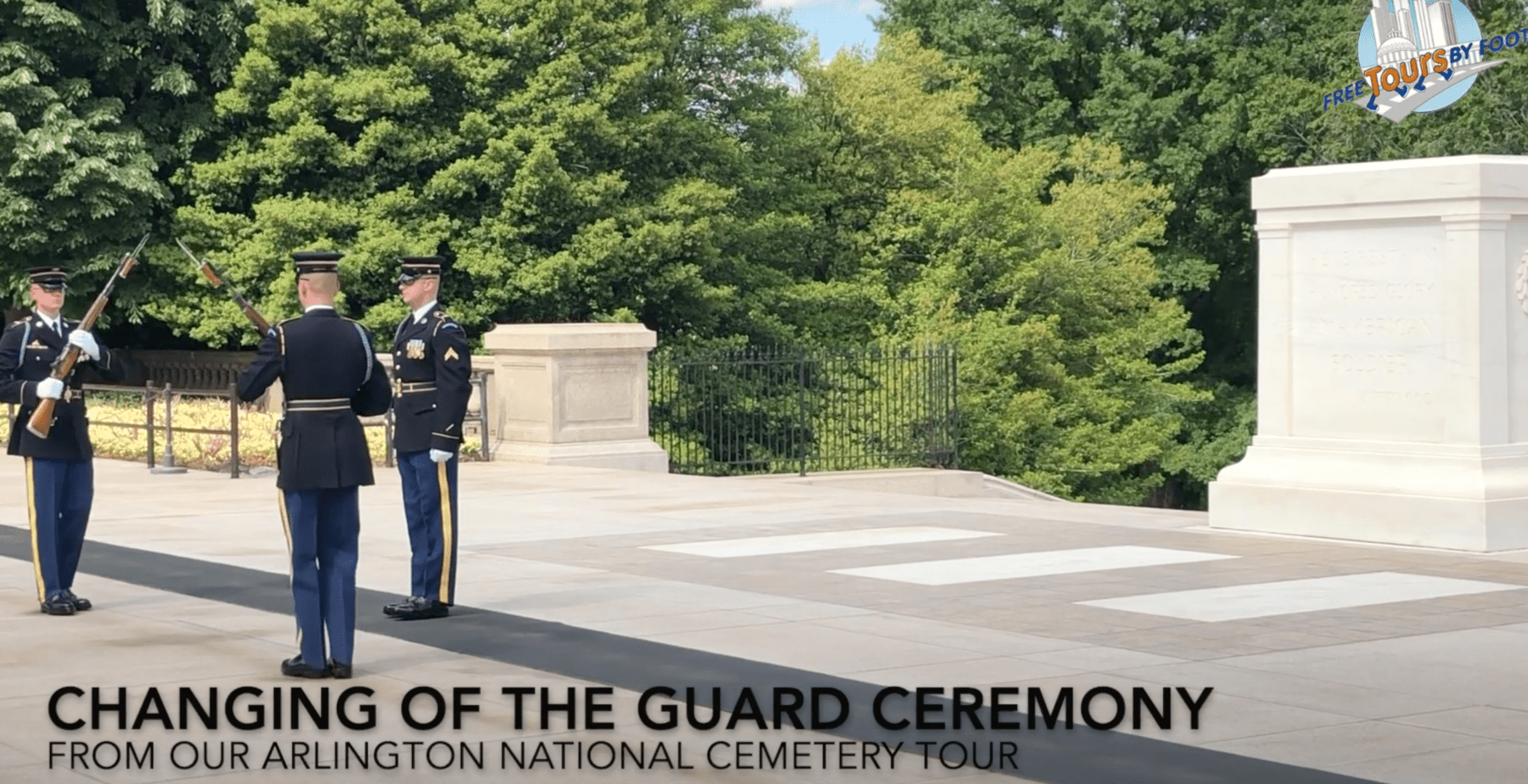
Both sentinels will acknowledge each other with orders. All three will salute the Tomb.
Then the relief sentinel will step onto the mat and take over where the now relieved sentinel left off.
Both the relief commander and the relieved sentinel will walk off (all amazingly in step with each other) and exit off the right, which concludes the ceremony.








